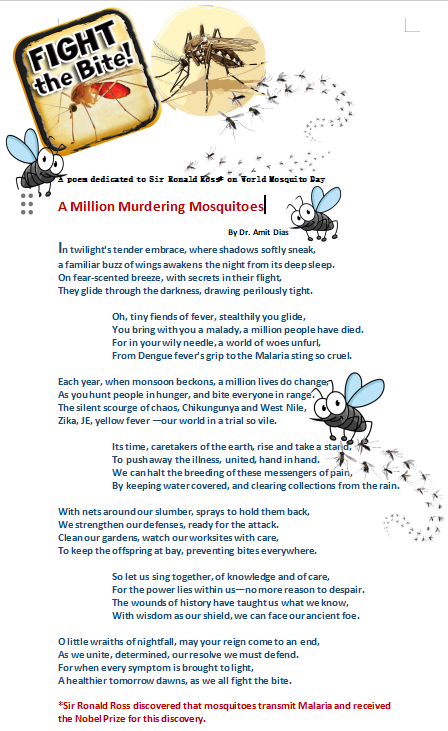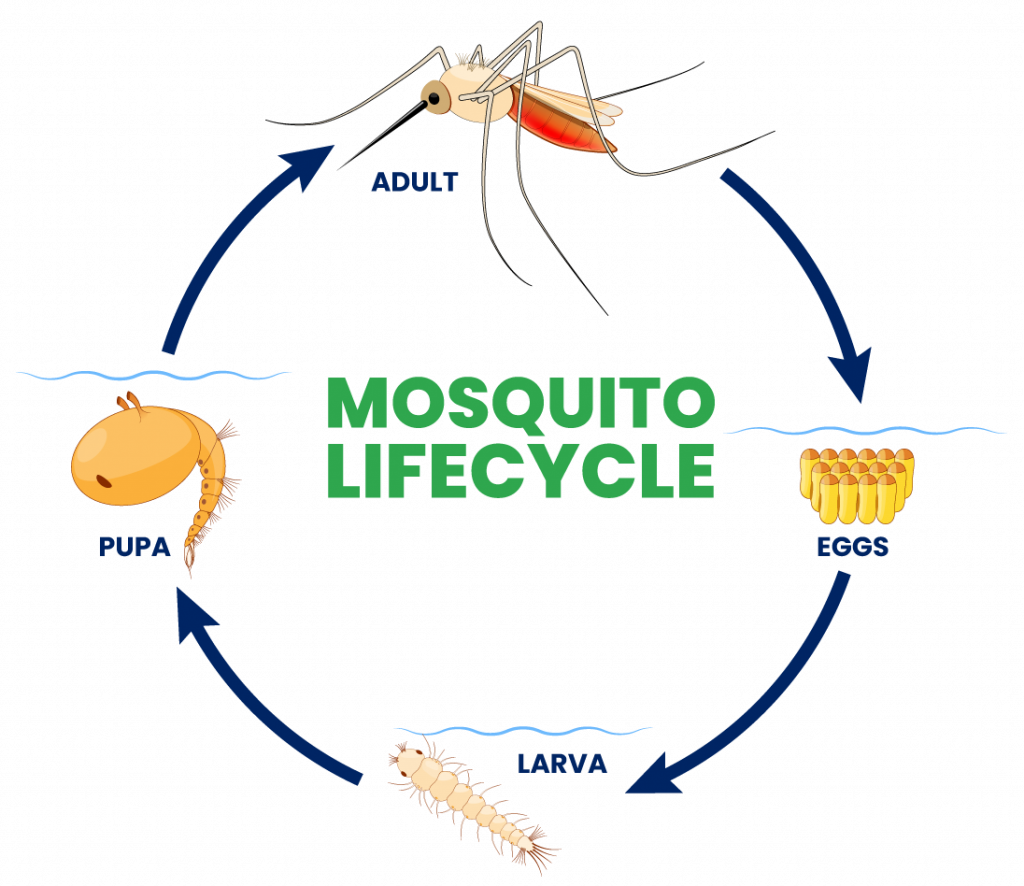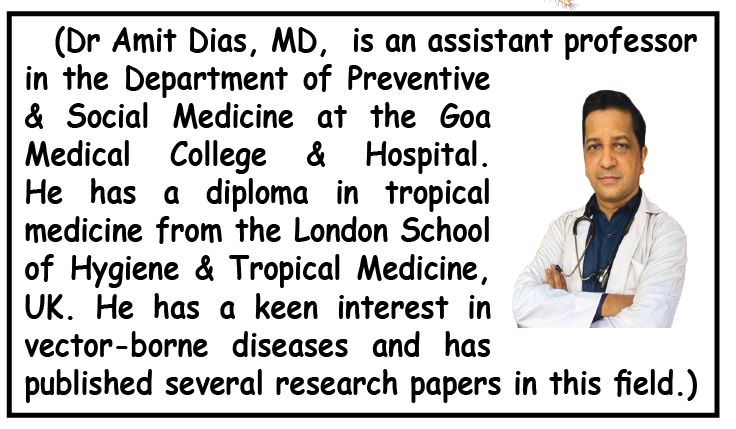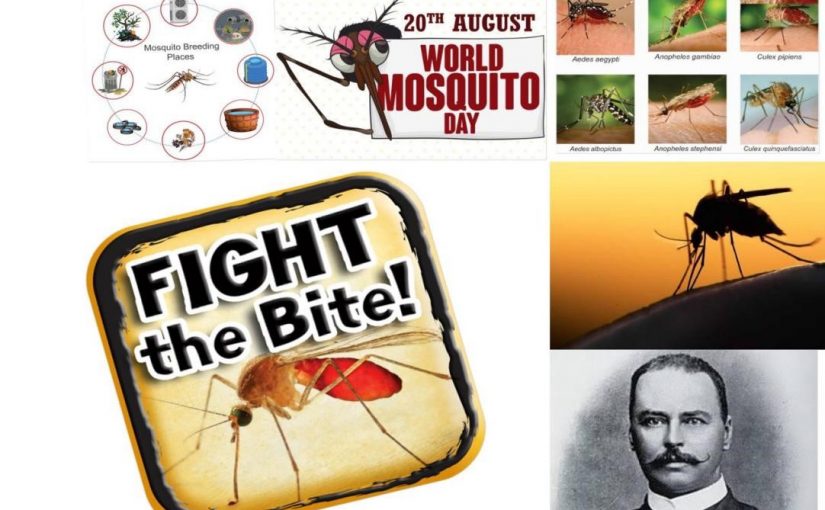World Mosquito Day:
Q/A interview with Dr Amit Dias
On the occasion of World Mosquito Day, observed on August 20 we buzzed Dr Amit Dias to help us understand why ‘World Mosquito Day’ matters. He says, “Mosquitoes infect around 700 million people every year. We need to battle the bite as many of these diseases are potentially fatal.” With the dengue outbreak spreading in Goa it is important for all of us to be alert and take proactive steps to save everyone’s life from mosquito bites.

Goan Observer: Thank you for joining us today on the occasion of World Mosquito Day. Tell us why we observe this day on August 20?
Dr Amit Dias: World Mosquito Day is observed on August 20 each year to commemorate the discovery made by Sir Ronald Ross in 1897. On this day, Ross, a British doctor, identified that female Anopheles mosquitoes are responsible for transmitting malaria. Before that, we always felt that it was caused by bad-air (Mal-Aria). This breakthrough significantly impacted the understanding of mosquito-borne diseases and has been crucial in shaping the fight against them.
It’s interesting to note that Sir Ronald Ross was born in India and this discovery was also made here. His research earned him the Nobel Prize in Medicine in 1902. Ross’s work laid the foundation for the development of mosquito control strategies, which are still relevant today in combating malaria and other mosquito-borne diseases.
Today we are aware of several special mosquitoes known to cause disease. They are responsible for around 700 million infections and many of them are potentially life-threatening.
Q: That’s alarming, could you tell us about the different species of mosquitoes and the diseases they spread?
A:There are several species of mosquitoes, each responsible for transmitting different diseases. Here are some of the common diseases attributed to the various species.
Anopheles: These mosquitoes are primarily responsible for spreading malaria. They can also transmit lymphatic filariasis.
Aedes: This species is known for spreading dengue, chikungunya, Zika virus, and yellow fever. Aedes mosquitoes are active during the day, especially early morning and late afternoon.
Culex: Culex mosquitoes are vectors for diseases such as West Nile virus, Japanese encephalitis, and lymphatic filariasis. They are most active at dusk and dawn.
Mansonia: These mosquitoes are known to transmit lymphatic filariasis. They breed in stagnant water, often found in vegetation around swamps and ponds.
Q: You specifically mentioned that female mosquitoes are responsible for the transmission of these disease agents. Is there any reason for this?
A: The reason why only female mosquitoes are responsible for spreading diseases is related to their biological need to reproduce. Female mosquitoes require blood meals to obtain the necessary proteins for egg development. Here’s how it works:
Blood for Egg Development: Female mosquitoes need the proteins (globin) and iron found in blood to develop their eggs. Male mosquitoes, on the other hand, do not lay eggs and therefore do not require blood. They primarily feed on nectar and other plant-based substances.
Disease Transmission: When a female mosquito bites a human or animal to take a blood meal, she can pick up pathogens if the host is infected. These pathogens can include viruses (like dengue, Zika, or chikungunya) or parasites (like the malaria parasite). The mosquito then carries these pathogens in her body and can transmit them to another host during subsequent blood meals.
Saliva Injection: When the female mosquito bites, she injects her saliva into the host’s skin to prevent the blood from clotting. It’s during this process that the pathogens can be transferred from the mosquito to the host, leading to the spread of diseases.
Male mosquitoes lack the anatomy and the need to seek blood meals, which is why they do not contribute to the spread of these diseases. They focus on feeding on nectar and other plant sugars, playing a different role in the ecosystem.
Q: What is the extent of mosquito-borne diseases?
A: Mosquito-borne diseases are a significant global health challenge. As I mentioned earlier, mosquitoes infect around 700 million people worldwide. According to the WHO, malaria alone affected approximately 247 million people worldwide in 2022, with an estimated 619,000 deaths. Dengue fever affects 390 million people annually, with severe cases leading to thousands of deaths. Other diseases like chikungunya, Zika, and West Nile virus also contribute to this burden.
The majority of these cases and deaths occur in tropical and subtropical regions, with children and pregnant women being particularly vulnerable. We have managed to keep malaria under control to quite an extent and are hoping to eliminate it soon. However, other diseases such as dengue are on the rise.
We also have cases of Zica viruses reported from our country. With easy travel, the disease agent and vector can travel from one country to another and the disease spreads.
Q: That’s alarming. Can one identify these mosquitoes? They all seem to look the same.
A: Yes, they can be identified based on their characteristic features. Here’s a brief description of some of the common species that we often encounter in Goa and the surrounding regions.
Anopheles: These mosquitoes are identified by their resting position; they sit at a 45-degree angle with their abdomens sticking up in the air. They are active during the night and breed in clean, slow-moving water.
Aedes: They are easily recognized by their black and white striped legs and body. Aedes mosquitoes are aggressive daytime biters and breed in artificial containers and stagnant water.
Culex: These mosquitoes are brown and prefer to breed in stagnant water with organic material. They are most active at night and are commonly found in urban and semi-urban areas.
Mansonia: Mansonia mosquitoes are larger and darker than other species. They are known to breed in water bodies with floating vegetation like pistia plants. These mosquitoes are also nocturnal feeders.
Q: How can we prevent mosquito-borne diseases?
A: Dr. Amit Dias: We call it Integrated Vector Control. Preventing mosquito-borne diseases involves a multi-level approach. We ‘approach a comprehensive approach that combines multiple strategies to manage mosquito populations and reduce the transmission of diseases. It includes environmental management (like reducing breeding sites), chemical control (using insecticides), biological control (introducing natural predators like fish that eat the larvae), and public education campaigns. The goal is to use these methods in synergy to effectively reduce the mosquito population and interrupt disease transmission.
Eliminate Breeding Sites: Remove stagnant water around your home to prevent mosquitoes from laying eggs.
Use Insect Repellents: Apply insect repellent on exposed skin when outdoors. Neem leaves are natural repellents.
Install Screens and Nets: Use window screens and bed nets to prevent mosquitoes from entering homes and biting during sleep. Sleep under insecticide-treated bed nets. For mosquitoes that bite during the night like the female anopheles mosquito, this is a very effective strategy.
Wear Protective Clothing: Wear long-sleeved shirts and pants to minimize skin exposure, especially during peak mosquito activity times.
Community Involvement: Engage in community clean-up campaigns to eliminate mosquito breeding sites collectively.

Q: Could you mention some of the measures the government is taking in India to tackle these diseases?
A: In India, the National Vector Borne Disease Control Program (NVBDCP) is the central government’s initiative to prevent and control mosquito-borne diseases. The program focuses on surveillance, early diagnosis, prompt treatment, and integrated vector management. The NVBDCP also emphasizes community awareness and participation in mosquito control activities.
Additionally, the government distributes insecticide-treated nets and conducts indoor residual spraying in high-risk areas. Goa is at risk as we have a lot of laborers who come to the state from regions where there is a high prevalence. The construction site is a good breeding ground for various species of mosquitoes, so it spreads very easily. There are Village Health and Sanitation Committees formed in various villages which actively look into the cleanliness of the village. The Swachh Bharat mission also contributes to this.
Q: That’s reassuring. You have given us a lot of valuable information, could you summarize the key message for our readers?
A: My advice to readers is to stay informed and proactive — here is a simple recap. Remember the buzzword MOSQUITO !!
M: Monitor construction activity and migrant laborers.
O: Observe ‘dry day’ – eliminate all breeding sites, and stagnant water, once in 7 days
S: Screen windows and doors to keep mosquitoes out.
Q: Quickly remove stagnant water where mosquitoes can breed.
U: Use mosquito insecticide-treated bed nets while sleeping.
I: Integrated vector control measures to be followed
T: Travel has to be mosquito-free to prevent spread to other regions.
O: Organize clean-up drives, cooperate with the Village Health and Sanitation Committee.

